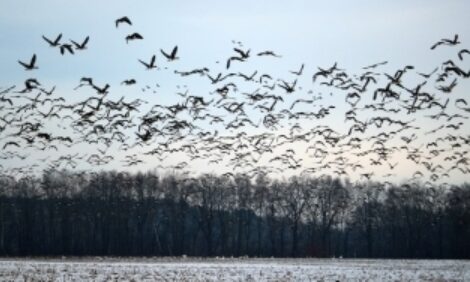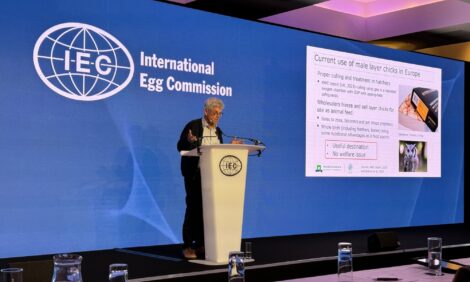



How to Produce More Quality Poults
For more quality poults, it is necessary to optimise both egg production and hatchability, writes senior editor, Jackie Linden.To produce more quality turkey poults, it is important firstly to maximise the production of settable hatching eggs and then to incubate those eggs appropriately, according to Dr Helen Wojcinski of Hybrid Turkeys in Canada. She was addressing the 2011 Turkey Science and Production conference in Macclesfield, UK, earlier this year.
Improving Egg Production through Breeder Hen Body Weight Management
Genetic improvements in growth and feed conversion are making it more difficult to achieve optimum egg production in heavy turkey lines, Dr Wojcinski explained.
Selection treads a fine balance between the focus on growth in the male lines and on egg production in female lines, she said. The hens are changing over time and modern lines would be too heavy if they were fed free-choice throughout rearing, as in traditional systems. Not only is over-feeding a waste of feed, overweight hens have too much abdominal fat and are prone to prolapses, failed peak production and egg peritonitis and they may lay fewer settable eggs.
According to benchmarking data service, Agri-Stats, in the US, three turkey eggs were 'lost' per bird between 2006 and 2009. An investigation revealed that the hens were significantly heavier when they came into lay and that over-consumption of feed at around six to 13 weeks of age was the problem.
Research has shown that faster average daily gain in the conditioning period before lighting – between 24 and 30 weeks of age – improves the peak in egg production as well as overall egg numbers.
If the birds were to be held back during this period, they would be unlikely to achieve good peak egg production. The Hybrid Converter hen, for example, should gain around 400g per week over this time to optimise growth rate into reproduction.
Experience shows that optimum egg production can be achieved by full feeding of the females to six weeks of age, then switching to controlled nutrient intake either by timed feeding of a pre-determined amount of feed daily or by free access to a diet of lower nutrient density. Thereafter, hens should be allowed to gain 400g per week until lighting.
Summing up, Dr Wojcnski said that limiting excess body weight gain improves egg production by between three and five eggs per hen, saves feed costs and lowers hen mortality as the result of fewer prolapses and cases of peritonitis.
Correct Incubation Conditions for Maximum Hatchability of Healthy Poults
Hatching a quality poult requires the appropriate incubation conditions, stressed Dr Wojcinski. She explained that breed affects eggshell conductance through differences in the size and number of pores in the shell. These differences are not indicative of egg quality but they need to be taken into account in the incubation profile.
Signs of incorrect incubation conditions include an extended hatch period, the presence of urates, white poults and leg defects such as short shanks and curled toes. These are symptoms of poor development during the plateau stage of oxygen consumption, which is around days 24 to 25 of incubation.
Overheating during the last four days of incubation particularly means the poults are forced too early, Dr Wojcinski explained, so they do not resorb their yolk sacs properly so the sacs may rupture and the birds may therefore be white in colour, small and immuno-compromised. Overheating can also affect thyroid metabolism and therefore feed intake, which may lead to starve-outs later. Other important organs will be smaller at hatch in poults that were incubated at too high a temperature for the breed.
Overheating is also thought to impact leg health, said Dr Wojcinski, which has implications for both marketing and welfare. Reseachers in North Carolina State University investigated the effects of normal versus lower oxygen levels and higher versus normal temperatures during the last four days of incubation on poult quality. Overheating, they found, affected the weight and thickness of the shank bones and led to weaker tendons due to thinner collagen fibres. These characteristics are associated with the subsequent development of leg deformities and tibial dyschondroplasia.
Feeding programmes need to control breeder hen body weight in order to maximise egg production, Dr Wojcinski concluded. Incubation profiles are breed-specific, she said, so it is important to follow the recommendations of the primary breeder regarding the optimum temperature at each development stage.
July 2011








